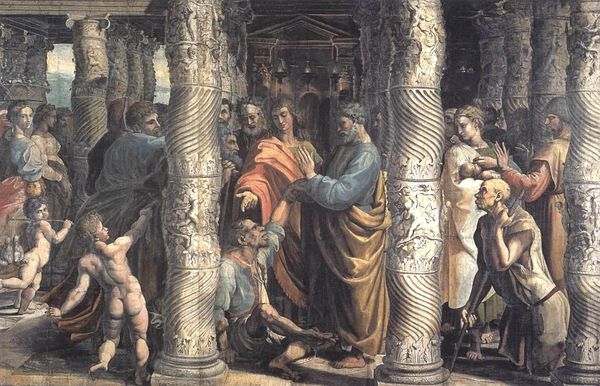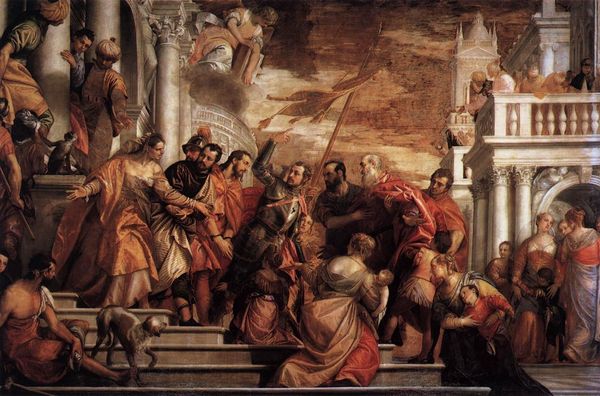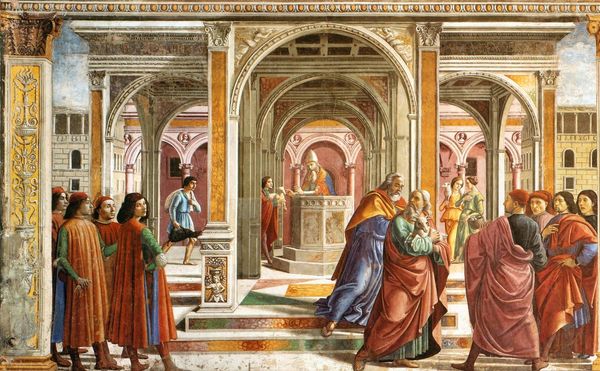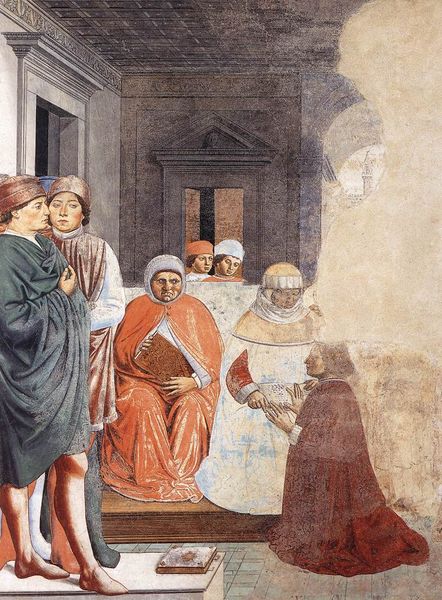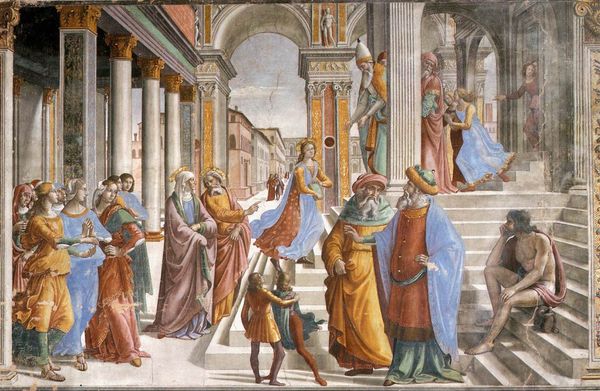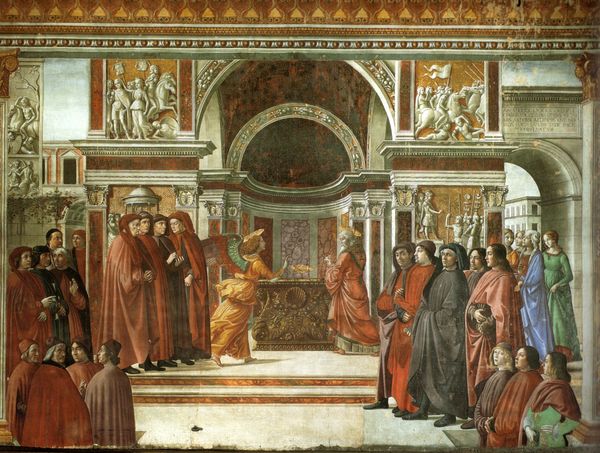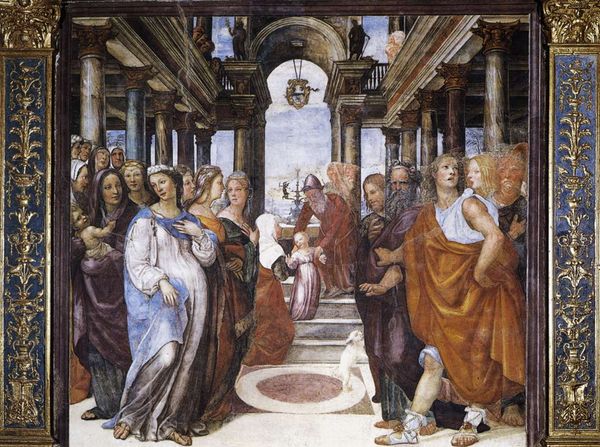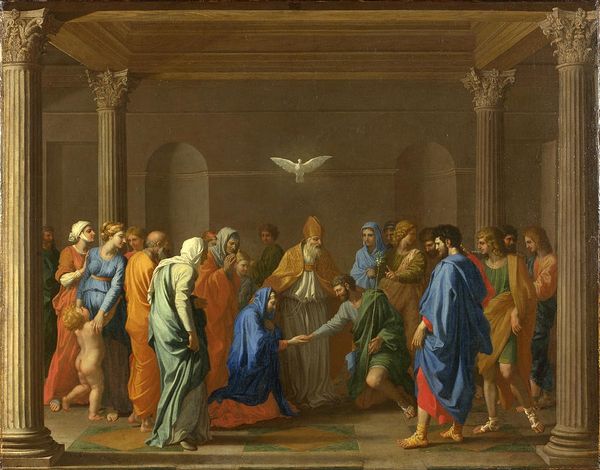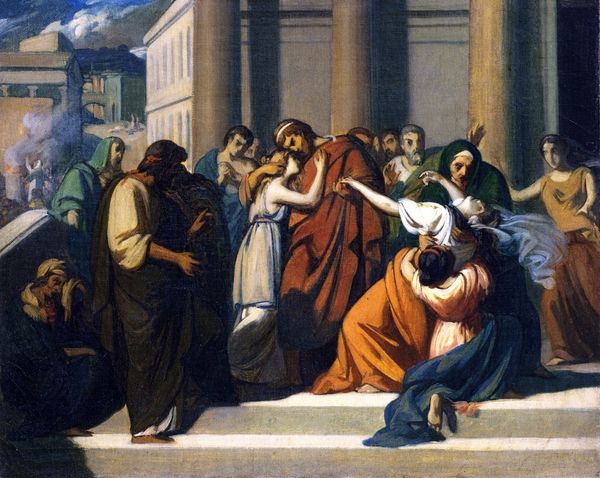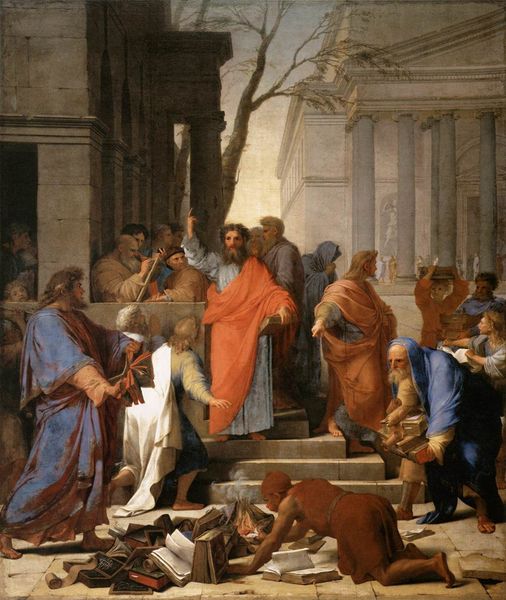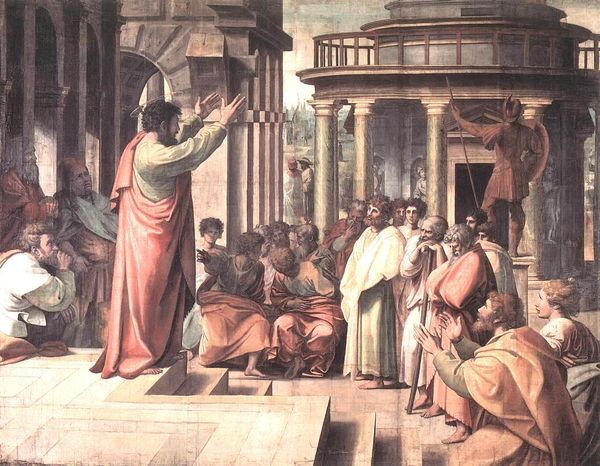
tempera, painting
#
narrative-art
#
tempera
#
painting
#
figuration
#
history-painting
#
italian-renaissance
#
early-renaissance
Copyright: Public domain
Sandro Botticelli made this panel painting of “Three Scenes from the Story of Esther” in Florence, sometime in the late fifteenth century using tempera on wood. The appeal of tempera lies in its capacity to produce intricate details through thin layers of color, requiring patience and precision from the artist. In this work, Botticelli and his workshop followed established workshop procedures, from panel preparation to the layering of pigments. Such a painting would begin with the careful selection and preparation of the wood panel, followed by gesso layers to create a smooth, absorbent ground. The design was then transferred onto the panel, and colors meticulously applied in thin, translucent layers, building up depth and luminosity. Understanding the materiality and labor-intensive processes of tempera painting provides a deeper understanding of the values, skills, and cultural significance attributed to artistic production during the Renaissance, as well as the socio-economic dynamics of workshop collaboration and the artist's position within the society.
Comments
No comments
Be the first to comment and join the conversation on the ultimate creative platform.
